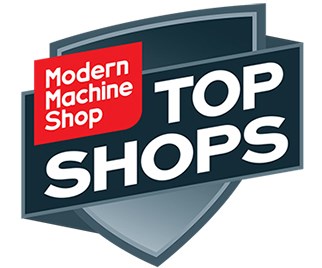Why the Top Shops Workshop at IMTS Will Be Worth Your While
Appears in Print as: 'A Workshop Worth Your While'
Our Top Shops workshop at IMTS will highlight processes and practices that successful shops are using to grow their machining businesses and become more profitable.
Last year was big for our Top Shops benchmarking program in that we hosted our inaugural Top Shops Conference in Indianapolis, Indiana, which was attended by hundreds of machining professionals just like you.
We didn’t want this conference to focus on uber-conceptual, sounds-good-on-paper, “bleeding-edge” concepts. Instead, we wanted to offer presentations and panel discussions about very advanced, yet practical tactics, strategies and shopfloor processes that attendees could readily apply once back at their shops. These included leveraging additive manufacturing in a shop setting, machine tool monitoring, data collection, cutting tool management, and best practices in areas such as business strategies, workforce development and human resources.
Featured Content
Fast-forward to this coming September at the International Manufacturing Technology Show (IMTS) in Chicago, Illinois, where we will present our Top Shops workshop on Thursday, September 13, in rooms W-375 E and D in the West Hall.
Like last year’s conference, the workshop will deliver real, applications-based information, and enable you to compare, contrast and consider processes and strategies that might help improve and grow your machining business. We will also present results from our eighth annual Top Shops benchmarking survey, enabling you to see how your key performance metrics measure up to leading U.S. shops.
The workshop will feature multiple panel discussions, too. For example, one panel will include a representative from each of the four 2018 Top Shops Honors Program winning shops. This panel will address various practices those successful shops have put into place to become more efficient on the shop floor as well as the front office in terms of machining technology, shopfloor practices, business strategies and human resources.
Another panel from Plethora will address data-driven manufacturing as it is applied at the shop, located in San Francisco, California. Plethora has redesigned what a contract machine shop does and how it operates. Developing its own software to automate the quoting, scheduling and CAM-programming processes is a key part of this redesign, but there is much more that is radically different about Plethora’s business model.
A third panel will address the skills gap. Although most machine shops face challenges attracting and training new employees, there are programs and tools available to help them. In this panel discussion, industry experts will touch on a few such programs and offer general, helpful advice for shops struggling with workforce-development issues.
This workshop is a natural extension of our Top Shops benchmarking program. I encourage you to visit topshopsevent.com to review the entire workshop agenda, and I hope to see you there.

How Can You Become a Top Shop?
While you’re waiting for the results of our 2018 Top Shops survey, you can review last year’s Top Shops report. This multimedia presentation includes videos and animated graphics of the 2017 Top Shops data and inaugural Top Shops Conference, as well as advice on how you can take your shop to the top. Also, don’t forget to register for this year’s event.
RELATED CONTENT
-
Predicting Size Change from Heat Treatment
While a precise forecast of a steel part’s size change during heat treating cannot be expected, by considering potential factors, a heat treater can provide a reasonable estimate that can help the shop prepare for final machining operations.
-
4 Tips for Building an Effective Machining Apprenticeship Program
Developing the right apprenticeship program can be one of the best things a machine shop can do for itself and for the future of manufacturing. Here are key “do’s” and “don’ts” to follow.
-
Bar Feeder Basics
Some primary factors are often overlooked when considering how to justify the implementation of a bar feeder for turning operations.


.jpg;width=70;height=70;mode=crop)



